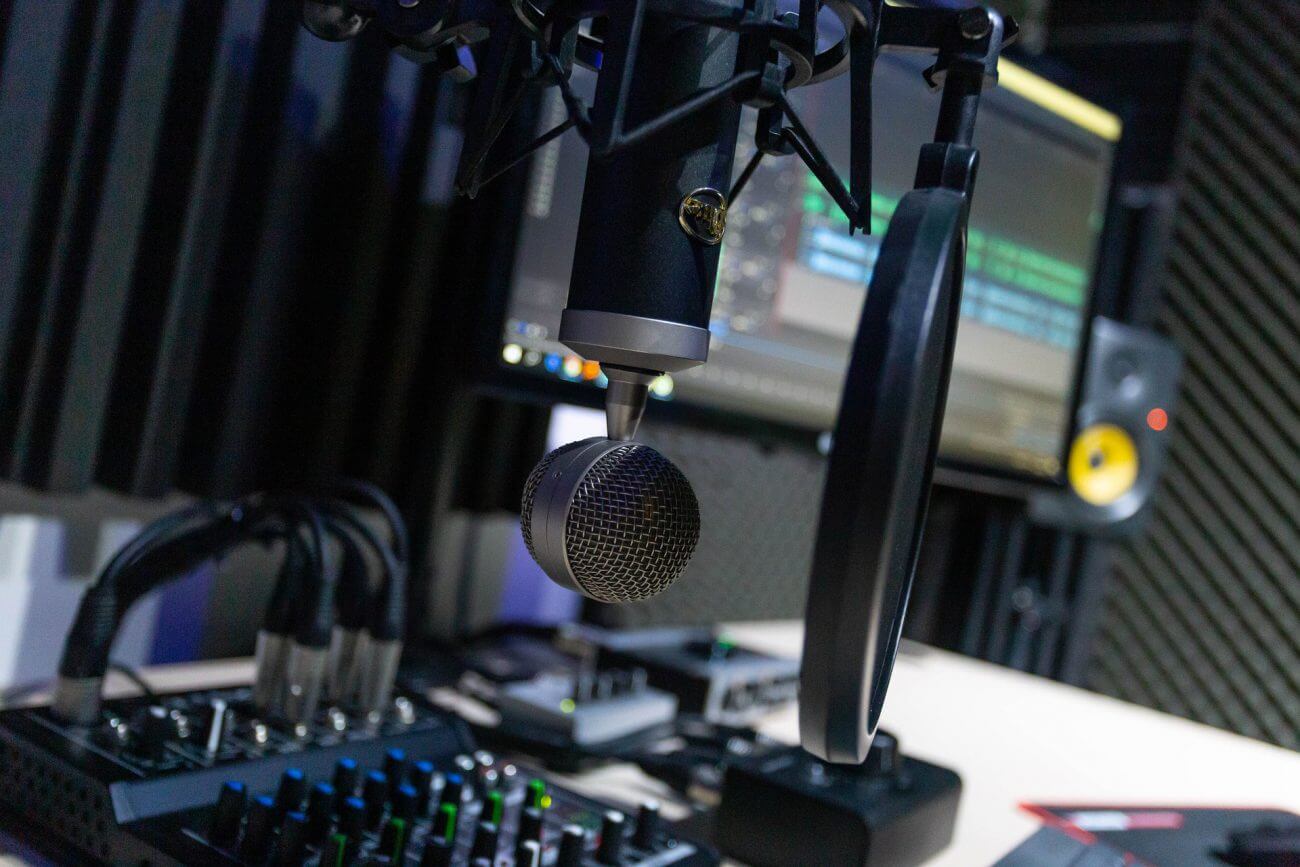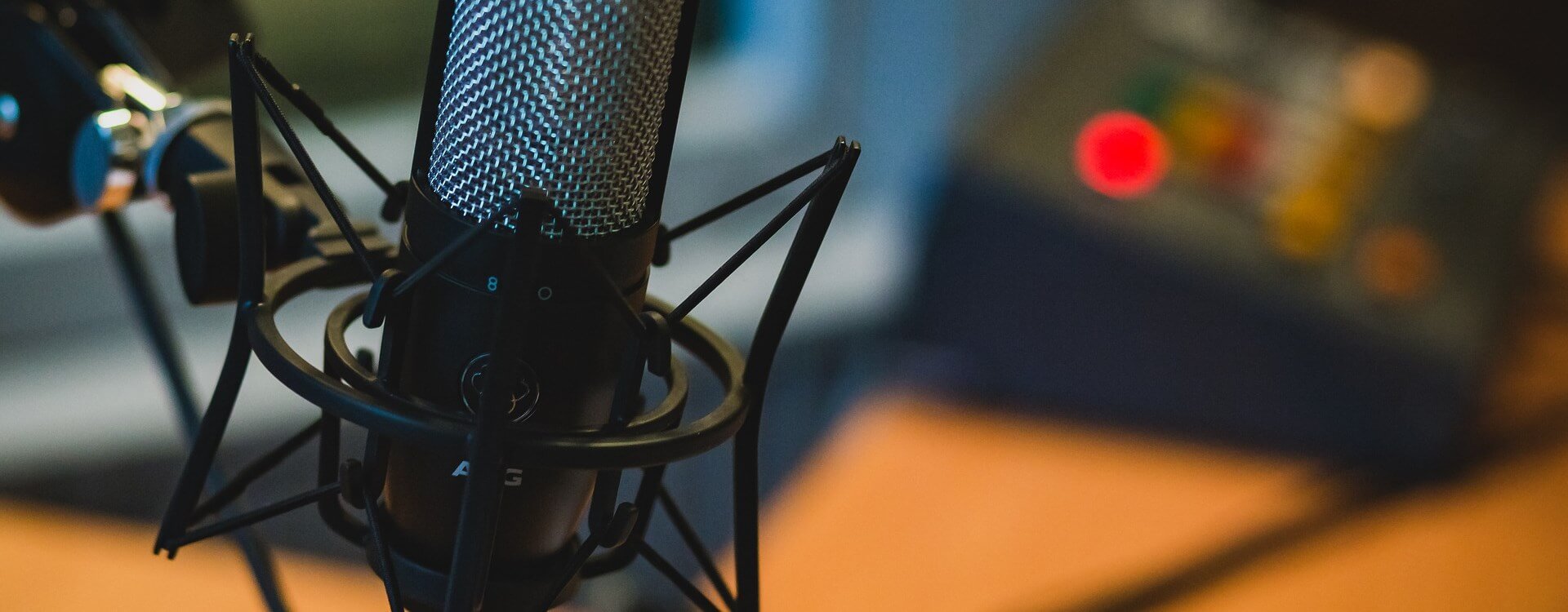Highlights
Table of Contents
Explore article topics
You’ve got an idea for a podcast. What next? While there is no absolute framework for starting a podcast, there are several things to think about if you want to move from coming up with a podcast idea to actually producing one.
Below, we will get into a few essential steps in the podcast production process. Don’t think of these as hard rules. Instead, think of what follows as a guide that will help you figure out how to start your own podcast.
1. Develop your podcast idea
What’s your goal?
It’s helpful to think about whether your podcast would be just a fun hobby or something to generate revenue. If you want to generate income, think about whether the topic is likely to be able to, at some point, attract advertisers.
Find your niche
Before getting too possessed by one podcast idea, get out a notebook or a laptop and write down several concepts.
Let’s say, for example, that you’re very into music. Think about the musical genres you like or musical history you’re really into. Perhaps you’re really into film scores, so maybe you could explore the possibility of a podcast focused specifically on great or underappreciated film composers. Maybe your country has some unique types of folk music, and you’re thinking about exploring them in a podcast. Whatever ideas come to mind, write them down.

Think about your audience
From there, think about why you want to do a podcast about one of these ideas and who will be your audience. Ask yourself what you can offer your listeners as a podcast host that other hosts cannot? Then think about how you can creatively package your topic and how you would research potential episodes, as well as interview experts and others with information to share.
Give your Podcast a name
Whatever your ultimate goals might be, your podcast will need a name that suits it. A good name is a good brand, which listeners will be able to latch onto when searching for podcasts that might interest them. Your podcast name should be catchy and unique; ideally, it should communicate the theme.
If you can come up with a good topic, motivation, and name, then you’ll be on your way to making your podcast a reality.
2. Podcast format & schedule
The next step is to think about your podcast’s format. The format will determine your podcast’s style and character, length, and workload. Several formats exist, including the one-on-one interview, panel show, solo commentary, co-hosted shows, fictional and nonfictional storytelling, documentary, amongst others.
Decide how many people will be involved
If your podcast is a solo show with a monologue, it will be a bit easier to self-produce than a podcast with multiple interviews. And if you’re the only host, you won’t have to deal with the personalities of co-hosts, and any revenue you generate will be your own.
What’s the ideal length of a podcast?
Next, think about the length. Longer podcasts will demand more of your time, as will podcasts that require one or multiple interviews, instead of just you and a guest or two talking about a certain topic. Generally speaking, 20-30 minutes is an ideal running time for a podcast, but go with what works best for you. If you need an hour, do an hour. If you think you only need 10 minutes for an episode, give it a shot.
Make a Plan
Another important decision that needs to be made has to do with your podcast schedule. Is it a weekly or bi-weekly podcast? Or maybe you have the time and financing to do a daily podcast. Whatever plan you choose, just make sure you can handle the production demands, so it doesn’t overwhelm your free time and resources.
3. Get your podcast gear
We recently explored the essential gear for starting your podcast. You can read that article for the details, but it’s worth covering some of the equipment and software needed for recording and editing your podcast below.
Audio recorder and microphone
To start, you will need an audio recorder and a microphone. If you don’t want to buy a recorder, your laptop can function as one (more on this below). There are several relatively cheap audio recorders and microphones on the market, like the Zoom H4 recorder and the Audio-Technica ATR2100-USB microphone, which has USB and XLR plug options. The USB plug allows you to record straight into your computer, while the XLR connects to either the recorder or an audio interface.
Microphones will need mic stands and windscreens or pop filters to eliminate or reduce wind and pops that can ruin audio mixes. Obtaining a shock mount is also a good idea, as it will prevent nearby vibrations from affecting your recording. You will also need XLR cables to connect your microphone to an audio recorder or audio interface.

Audio interface
Speaking of audio interfaces, this is a piece of gear you will need if you want to record directly onto your computer and editing software. Audio interfaces allow you to transfer audio or MIDI signals onto your computer via USB ports. Focusrite makes a line of excellent budget audio interfaces, as do MOTU, M-Audio, and PreSonus.
Editing software
For editing software, you can use Garageband (for Macs), Ableton (Mac or Windows), ProTools, Audacity, or even Adobe Audition if you have a subscription to Adobe Creative Cloud. Demo the software to find the best option for you.
Get unlimited royalty-free 4K footage
4. Choose theme music & sound design
Ultimately, you will want your podcast to have quality theme music and sound design. Theme music, which can be played in a podcast’s intro and outro, will give your podcast a sonic identity that will be instantly familiar to listeners.
One option is to hire somebody to handle these tasks for you. But, another great option is to subscribe to a licensing platform like Artlist for your podcast music and podcast sound effects needs. Yet another option is to look for free music in the public domain and Creative Commons. However, your options will be more limited, as public domain recordings will be quite old, and Creative Commons recordings aren’t always aesthetically the best.
5. Find a host for your podcast
We’re not talking about a human host, but a platform that will host your podcast. This service will host your audio recording file and RSS feed, which is a web feed that provides users with updates for the sites they subscribe to.
One option is Buzzsprout, a popular podcasting platform with a monthly $12 subscription fee. Another option is Podbean, which is a bit more expensive than Buzzsprout at $29 per month. There are many others, so be sure to do your research.
Ultimately, you’ll probably want to submit your podcast to iTunes Podcast Connect. When submitting to iTunes Podcast Connect, you’ll have to wait anywhere from 24 hours to a couple of weeks for approval. Once approved, it’s a great way for people to find your podcast.
Things to remember
Hopefully, this gave you an idea about how to start your own podcast. Remember, a truly good podcast is only as strong as its idea. Think of several ideas and pick the best one, and also ask yourself why you really want to do it. If your podcast idea is good and your reasons for wanting to do it are strong, then it’s time to think about schedule, format, hardware, and software tools.
Once you’ve got these things sorted, practice your interview voice, group discussion, or monologue speaking skills. When you’ve created a good first podcast episode, be sure to find high-quality SFX and music for it. Great audio design can make all the difference!
Share this article
Did you find this article useful?
Related Posts
- By Jessica Peterson
- 7 MIN READ
- By Josh Edwards
- 13 MIN READ
- By Artlist
- 12 MIN READ
Latest Posts
- 25 Apr
- By Josh Edwards
- 4 MIN READ
